Text
I really love both your analysis and choice of scene to analyze in this post. I think ATLA is the single best animated show of all time, maybe even just the best show of all time, and this scene is one that really shows why. Your analysis of the form of shots, color used, lighting, and other formal aspects paired with the meaning that they symbolize not only does the show justice but also uses the theory that you chose very well. Also just wanted to say that Zuko is a great example of a Plato prisoner, totally agree.
@theuncannyprofessoro
Avatar: The Last Airbender, the Formalist Symbolism of Shot Composition
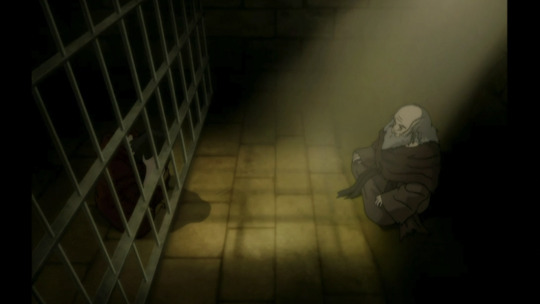
Link to Video Essay
The series, Avatar: the Last Airbender, remains one of the most critically acclaimed animated shows over a decade after its original debut in 2005. Intricate world-building, an immersive score, and themes of genocide, totalitarianism, Stockholm Syndrome, redemption, and spiritual balance are partially what cultivate and cement ATLA’s memorability to a degree that prompts recognition from outlets such as Vanity Fair, IndieWire, and general audiences years after its premier. It is a heroes’ journey about restoring balance, cross-cultural understanding, and peace after the Fire Nation waged war. However, it is also filled with striking visual storytelling, its awareness of semiotic significance and the delicacy through which it handles visual rhetoric.
While lighting, camera angles, and shot composition are used as formalist signifiers throughout the entire show, I will specifically be focusing on the scene where Zuko visits Iroh in the jail cell. For context, Zuko has been accepted back into the Fire Nation by conforming to their current ideals of ethnocentrism and helping their efforts in the war. Simultaneously, Iroh has been othered and imprisoned for treason because of his rejection of these same ideals. Thus, we know contextually that the two characters are performing and interpreting their racial identities differently. The composition of the scene through its lighting and camera angles, however, adds another layer of commentary to the duality of these two characters. It communicates that while Iroh is physically othered and imprisoned for his enlightened perspective on what it means to perform his racial identity, Zuko is embraced and accepted for his antithetically ignorant perspective on the Fire Nation.
Through its use of light and dark imagery as symbolic concepts within the scene, ATLA demonstrates what Sergei Eisenstein describes as “a cinema that seeks the maximum laconicism in the visual exposition of abstract concepts” in his article, “Beyond the Shot [The Cinematographic Principle and the Ideogram].”[1] The light streaming in from the small window in Iroh’s prison cell represents the concept of enlightenment and awareness while Zuko kneels helplessly in the shadows. This is a subversion of expectations, as Iroh is imprisoned, looked down on, and othered within his nation, yet the light implies he should be treated antithetically. The role reversal between the isolated yet enlightened prisoner and the idolized yet ignorant prince is further emphasized through the stark duality of light and shadow. Eisenstein describes the composition of shots and visual symbolism as a necessary type of collision, writing “What then characterizes montage and, consequently, its embryo, the shot? Collision. Conflict between two neighboring fragments. Conflict. Collision.”[2] Few visual elements mirrored across hundreds of years of symbolic imagery more aptly demonstrate conflict and collision within a shot than the light and the dark—the collision, conflict, and interplay between shadows and the sun that expels them.
Applying the argument for collision within a shot to lighting specifically, Eisenstein states, “The same applies to the theory of lighting. If we think of lighting as the collision between a beam of light and an obstacle, like a stream of water from a fire hose striking an object, or the wind buffeting a figure, this will give us a quite differently conceived use of light from the play of ‘haze’ or ‘spots.’”[3] Through this framing, there is not only the existence of light and shadow within a shot but a battle between them—an apt description considering the broader plot of war between ethnocentrism and cross-cultural unity that permeates Avatar’s world, as well as Zuko and Iroh’s representations of these ideologies respectively. Light and shadow can coexist, yet this coexistence is constantly implicated with the power struggle between the two. Avatar’s shots in the prison scene put light and dark imagery similarly in conflict, further explaining why one must be othered and the other accepted by their nation.
Eisenstein explains, however, that these abstract concepts necessitate an intertextual basis that grounds them in signified meaning. Speaking to how visual signifiers develop culturally understood meanings over time and in relation to the context clues around them, Eisenstein writes that within forms like the Haiku and Tanka, “The method, reduced to a stock combination of images, carves out a dry definition of the concept from the collision between them.”[4] Avatar’s visual rhetoric plays out similar to poetic communication, drawing on the idea that shadows and light, when placed together create meaning. Bolstering the significance of this collision with the shot is a history of cultural ideas and philosophical texts that perpetuate similar associations. Eisenstein recognizes how this type of intertextuality strengthens symbolism, writing, “The same method, expanded into a wealth of recognized semantic combinations, becomes a profusion of figurative effect.”[5] The integration of atramentous and brightened hues into common modern cultural perceptions is seen through how it manifests in language, with common expressions like being in the dark. However the meaning behind the use of shadows is strengthened even further when considering what is perhaps the most famous use of dark and light symbolism across millenia—Plato’s acclaimed allegory of the cave. Plato paints a visual picture of prisoners who live in an underground cave and can only see a wall where the shadows of various objects are projected. Thus, they believe shadows to be reality. Once a prisoner escapes and sees not only the objects that were originally creating the shadows, but also the sun above, he is described as enlightened, having a fuller view of reality.
The shot plays on this symbolism by intentionally depicting Zuko staring down at the shadows of the prion bars while Iroh stares at Zuko directly. This indicates that, much like the prisoners in Plato’s allegory, Zuko is shrouded in ignorance, unable to see how his compliance with ethnocentrism is not inherently necessitated by him being the prince of the Fire Nation. Iroh, on the other hand, sees the real prison bars and from his perspective, Zuko is the one behind those bars, as is emphasized by the camera angles in the scene being shot from inside the cell looking out. Iroh sees a clearer version of reality, understanding a racial performance detached from the Fire Nation’s current culture, and realizing Zuko is mentally imprisoned.
The prison scene is a poignant example of the type of formalism that Eisenstein explores. ATLA’s montage demonstrates “precisely what we do in cinema, juxtaposing representational shots that have, as far as possible, the same meaning, that are neutral in terms of their meaning, in meaningful contexts and series.”[6] The series of shots that comprise this scene strengthens its visual storytelling, as each shot—its perspective and composition—further emphasizes the dichotomy between the two characters within it. Astoundingly, a 3 minute scene has the capacity to communicate the “collision” of othering versus acceptance; cultural enlightenment versus ignorance; and ethnocentrism versus global unity personified between two of the show’s protagonists.
[1] Sergei Eisenstein,“Beyond the Shot,” Film Theory and Criticism, (2009): 15
[2] Eisenstein, “Beyond the Shot,” 19
[3] Eisenstein, “Beyond the Shot,” 21
[4] Eisenstein, “Beyond the Shot,” 15
[5] Eisenstein, “Beyond the Shot,” 15
[6] Eisenstein, “Beyond the Shot,” 15
@theuncannyprofessoro
6 notes
·
View notes
Text
I really love your analysis of the uniqueness of the show and how it stands out from such a saturated market. I also wrote about a superhero show and found a similar trait in it but I think your choice of theory really helps to encapsulate that idea. I also really love your analysis of the fact that he has yet to win his first big fight, another thing that makes him stand out from his contemporary superhero counterparts, of which we almost never see lose other than maybe the first Marvel movie with Thanos. I really love that they subvert the genre and even his own name, as he is Invincible but repeatedly gets pummeled in every fight he takes.
@theuncannyprofessoro
A Cultural Studies Analysis on Invincible
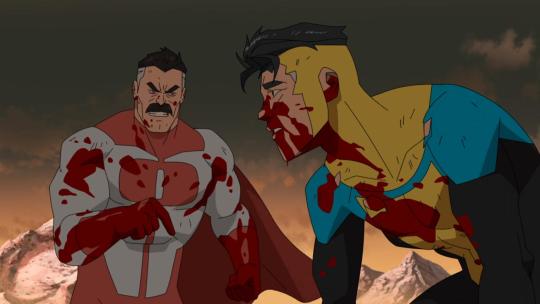
In my video essay, I looked at Prime Video’s Invincible (2021-) and analyzed the various themes of identity that appear throughout the show, all revolving around the main protagonist of the series, 17-year-old Mark Grayson. I pair this up with various Critical Studies sources that cover reception theory and critical race theory and intersect some of the arguments made to highlight cases of othering within the show. As mentioned, the analysis is centered around Mark’s identity as a superhero, as a young adult, and as a half-Human and half-Viltrumite, as he develops his powers and ‘learns the ropes’ of the superhero job.
In regards to his identity as a superhero, I look at how Mark/Invincible is othered in the scope of superhero media through how his origin story diverts the theme of loss and redemption. Stuart Hall’s reception theory delves into the coding and decoding of messages in certain texts.[1] I pair his argument on how instances of codes can be made to appear as though they haven’t been constructed anymore because of how popular or generally used they’ve become in certain communities with Max Horkheimer’s and Theodor W. Adorno’s argument that in the production of mass culture, more specifically in media, the audience can more or less easily predict the structures and narrative elements of the piece.[2] Superhero media is one of the highest-grossing genres currently across both television and film, meaning that audiences have grown accustomed to the stories of the genre. A result of that is a discourse that mirrors the arguments made by Hall, Horkheimer, and Adorno. Fingers have been pointed specifically at large corporations such as Disney, who mass-produce superheroes in a manner that utilizes the same molds and structures repetitively and has greatly influenced superhero media across the Western production world especially. Attempts at creating unique texts in this genre have been made, resulting in the subgenre of ‘capepunk’, a genre that aims to tell more grounded and realistic superhero worlds and critique mainstream superhero media while making use of adult themes and explicit content. This genre has been popularized in recent years thanks to shows like The Boys (2019-) and Invincible, however, arguments have been made that these types of media eventually end up becoming the media that they’re trying to subvert and critique. I acknowledge that Invincible certainly does appear similar to the media it makes critiques on. It’s not convoluted or unique and fits the descriptions of media that Hall, Horkheimer, and Adorno describe. I do argue that it presents several cases in which it can break off from the mold and create new and refreshing cases that are coded.
The instance I look at in-depth is how Mark continuously faces loss and how this plays into his identity as a superhero. Comparing his journey to a common superhero origin story that is presented in most popular instances of the genre, Mark ticks most of the boxes, but one thing he manages to keep doing is losing. And it ends there. He doesn’t have some kind of redemption or resolution within the episode of the season or the next season, Mark will lose a fight and the episode will end there. We move on to whatever conflict he has to face in the following episode. This is an important aspect of Mark’s origin story, as it not only grounds his story but also reflects his ideology and how it changes. As he physically endures countless beatings and is left unconscious multiple times, his belief in what it means to be a superhero is challenged and broken each time. This repeated loss, however, is interpreted negatively in large circles in online forums who have expressed their annoyance at Invincible’s inability to win fights, or even whether he should be able to call himself ‘Invincible’, causing Mark to be othered from his superhero counterparts across the genre. Mark’s case is seen as unique, in some respects, an early failure in the image of a superhero. I believe this perspective is evidence of being unable to decode the message of the creators on the constant battle that Mark endures in his belief system, which is also symbolized by the title sequence of the show. The “INVINCIBLE” title card is splattered with more blood each episode of the first season, mirroring the repeated damage that Mark endures, while in the second season, the title card is completely covered in blood and begins to crack. The cracks grow in each episode, revealing a new layer underneath.
I bring up how this is made more clear in the second season, more specifically in the mid-finale, and present clips and narration on a case where Mark’s ideology takes a drastic shift. The entire premise of learning to fight with the mentality of killing the opponent creates an opportunity where Mark can go toe to toe with his opponent, yet this ideology conflicts with his identity as a superhero, and this conflict causes him to ultimately lose the fight. This ideology is not only tied into Mark’s identity as a superhero, as additionally, it is also his racial identity. As mentioned in the video, the Viltrumite alien race is coded with the definitions of colonialism, imperialism, and racism that Robert Stam and Louise Spence present.[3] They use their superhuman abilities to kill and conquer different alien races across the galaxy. Mark, the only Viltrumite in the entire galaxy that opposes this idea and seeks to protect his Earth, is othered by other Viltrumites. Interestingly enough, physically and biologically, Mark is a Viltrumite, but they are completely indistinguishable from humans apart from the supernatural abilities they possess and their prolonged life spans. Mark seeks to other himself as much as possible from the Viltrumites. This is symbolized by his superhero outfit that sports a color scheme of yellow, blue, and black and has a unique design, which is completely different from the white and grey uniforms that Viltrumites wear, depicting the uniformity of military garments. Mark’s father, Omni-Man, wears a unique combination of the base of the Viltrumite uniform with a human superhero design on it, symbolizing how he is caught in between these two worlds which is explored more in the second season of the show.
Mark steers away from conforming to Viltrumite ideologies and fights and prepares to save or liberate Earth (and potentially the galaxy) from Viltrumite's influence. I mention how his Asian identity fits the mold of Stam and Spence’s argument on naive integrationism, as the creators substitute an Asian character into a role dominantly played by white characters and never truly explore his Asian identity, however, I argue that Mark’s role as an active opposer of the coded ideologies Viltrumites embody, and therefore doesn’t play Stam and Spence’s argument.[4]
Invincible creates a unique plot in a medium that is saturated with the elements that the show subverts. Mark embodies roles that while othering him from his counterparts both beyond and within the scope of the show, present the case for an unlikely superhero who may be able to surpass those around him. Especially when he’s able to win his first major fight.
[1]Stuart Hall, “Encoding, Decoding,” 551
[2]Max Horkheimer, Theodor W. Adorno, “The Culture Industry: Enlightenment as Mass Deception,” 98-99
[3]Robert Stam, Louise Spence, “Colonialism, Racism and Representation: An Introduction,” 753
[4] Stam, Spence, “Colonialism, Racism and Representation: An Introduction,” 757
@theuncannyprofessoro
6 notes
·
View notes
Text
I really enjoy your analysis and conclusion of how Lost provides a unique setting and perspective on the centering of stories. As you point out, once your plane crashes, things that dominated your life prior no longer have a grasp on your current situation and I think Lost really drives that home. This is particularly true considering the point you make about the time that television shows can span, such as the cultural phenomenological run that Lost had and the fact that the show focused on individual characters' stories for many of its episodes. By virtue of all of these points, I think you are absolutely right that Lost opens up new space and in a way subverts what was likely, sadly, expected of a show of its time.
@theuncannyprofessoro
Speculative Othering Final
youtube
Lost (2004-2010) is remembered for being a sometimes confusing but almost always sexy adventure show. The show follows the aftermath of a plane crash on a mysterious Pacific island, when a group of strangers must figure out how to survive in the face of no rescue and a sinister group that already inhabits the tropical rock. Lost is unique for its time in that it featured many characters of color from a variety of backgrounds and identities. Its inclusion of diverse characters was a conscious break from norms in TV.
In their critical media book Unthinking Eurocentrism (Shohat and Stam, 1994), Ella Shohat and Robert Stam include a chapter titled “Stereotype Realism and the Struggle Over Representation”. In this chapter, they state: “Filmic fictions inevitably bring into play real-life assumptions not only about space and time but also about social and cultural relationships” (178). This applies doubly to television, because TV is more flexible in its production: you can see cultural changes play out over time through one TV series in a way you can’t do with one film because TV is produced is produced continuously, sometimes for decades at a time (The Simpsons, General Hospital, Sesame Street). They continue, “film is [representation], [but] it is also an act of contextualized interlocution between socially situated producers and receivers. [To say art is constructed] is not enough...We have to ask: Constructed for whom? [W]ith which ideologies and discourses' in mind? (180). I think that Lost was made with a wide range of audiences in mind. It has action, mystery, and romance. It has moments of levity and extreme anxiety. It arrived at a tense time; the pilot came out in 2004, a mere three years after the 9/11 tragedy, when America was waging war in Afghanistan and Iraq. Ultimately it was a show about community and teamwork, and sought to unite those through their differences instead of dividing them. Lost was set in the present at the time of its release and its universe mimicked our own in many ways, including with the U.S.-led wars in the Middle East. Sayid (Naveen Andrews), a supporting protagonist, is an Iraqi national and former soldier. Sayid has a complicated and sorrowful backstory, like most of the characters on the show, but his position is unique in that his character embodies a personality that America, writ-large, was extremely suspicious of; an Arab man aligned with the government of his home country.
The character Sawyer (Josh Holloway) is a country bad-boy who represents this suspicion. In the second part of a two-part pilot, he accuses Sayid of being a terrorist and being responsible for the plane going down. This leads to an altercation between the two men, shown in the clip below. (S01E1-2, LOST clip - Sayid and Sawyer Fight).
The accusation is blatantly racially motivated and it is only the first of many aggressions Sawyer inflicts on Sayid because of his ethnicity. With his love of guns, sex, booze and cigarettes, Sawyer is a specific American stereotype–the hypermasculine, violent, and bigoted man. Surely there were people watching Lost whose identities at least partially aligned with these qualities; through Sawyer, they see themselves represented, perhaps in an exaggerated light, or maybe turned down a notch. Despite Sawyer’s bias and bouts of cruelty, he is an important character who grows and learns to treat people better. As Shohat and Stam write, “spectators… can accept, question, or even subvert” a work of media. Further, “the cultural preparation of a particular audience can generate counter-pressure to a racist or prejudicial discourse” (182). Lost offers a critique of Sawyer-like ideology without totally alienating those who share it, as well as giving voice to the group which they vilify.
Since Sayid is not a one-dimensional token character, his reaction to Sawyer’s racism towards him gets its due. In the clip above, Sayid is shown to be the instigator of the fight, but he is not represented as acting unreasonably. A common racist stereotype about Arab men is that they are hot-tempered and aggressive. Lost does not try to fight this false notion by making sure Sayid is non-violent. Instead, his anger and aggression is represented with more nuance than a simple ‘Violent Arab Man’ trope. He’s responding to an attack on his character and nationality, and in the circumstances of the show, his violent response is understandable. It represents both identities in a forgiving light.
Though Sayid’s character is an important part in the progression of Arab representation on screen, it’s not perfect. Naveen Andrews is a British man with Indian heritage, but he plays an Iraqi. This relates to Shohat and Stam’s points about representation. Those authors are concerned with white actors performing in roles meant for people of color, and they reference the satirical work How to Make an Indian Movie: ”Import a Greek to be an Indian princess. Introduce a white man to become an ‘Indian’ hero. Make the white man compassionate, brave and understanding ... Pocket the profits in Hollywood” (181). There is another layer to this that has emerged in the modern age where people of color are made into a generalized ‘other’ where they play nationalities that are not their own. I don’t think it should be taboo for people to play across national lines; an American should be able to play a Brit, so why should a Brit not be able to play an Iraqi? But there is a line where it becomes racially offensive, or at least controversial. For many producers of media at this time, it comes down to looks; few are interested in making sure the actor who plays a guy from Iraq is actually from Iraq, as long as he ‘looks like’ he could be from Iraq. For white audiences, there is not always a lot that distinguishes one brown person from another.
There are other times in Lost where white audiences are not the sole focus of the show. There are detailed storylines that don’t involve white characters. The first example of Lost de-centering white voices is when there is tension between two men of the group of survivors, Jin (Daniel Dae Kim) and Michael (Harold Perrineu). S01E06, “House of the Rising Sun” the opening scene is Jin brutally attacking Michael at the water in front of Michael’s son, Walt. Jin seems to intend to kill him, or at least injure him severely. Walt cries for help and Sawyer and Sayid sprint to Michael’s rescue. The following clip is the conversation that occurs after the attack. https://www.youtube.com/watch?v=K-fS679Ui1U
Sayid becomes the mediator of the disagreement with Sawyer playing a secondary role, mostly as a taunt (did you catch the ‘Omar’ comment he made to Sayid?). Jin does not speak English, but is obviously very angry. Michael is wounded and angry as well. Sayid demands to know what happened and Michael insists that the reason Jin attacked him was because he’s black. Michael says to Sayid that he ‘doesn’t know what it’s like in Iraq, but in America, Korean people don’t like Black people’. Jin does not have the language to defend his actions. Not that they were really defensible; he tackled this guy and tried to drown him basically for talking to his wife. The racial component was self-evident and then mentioned explicitly. The conversation is almost entirely between people of color, except for Sawyer making snide remarks.
This is something remarkable, especially for a show at this time. That the white characters, identities and narratives are not the core of this scene is unfortunately kind of surprising. If there are white people around, why aren’t they getting centered? Because Lost is making a conscious attempt here to show experiences that are not normative to white americans. It is also making an attempt to show intricacies, contradictions, and irony in racial conversation. As far as a TV show like this can reasonably be, it’s realistic. Sayid would not necessarily know the background of racial tension in the US between black and asian people (Lee, 2023). Jin also would not necessarily be aware of this, because he himself is a Korean national, and also has the language barrier keeping him from understanding this particular point of tension. Lastly, Michael has reason to accuse him of racism, because as an American Black man, he’s no doubt experienced it in his life, from multiple sources. Lost presents context for the characters’ actions (it’s known for flashbacks, too) and also is understanding of multiple perspectives and not adhering to a binary view of race or experience. Despite its imperfections, Lost gave screen time and narrative depth to people who have not been historically represented in television, specifically in the action genre. Lost’s setting lends itself well to this breakdown of tradition, because once your plane crashes, the old world doesn’t really exist anymore.
@theuncannyprofessoro
3 notes
·
View notes
Text
Psychoanalytic Theory in The Boys

In his article titled ”Ideological Effects of the Basic Cinematographic Apparatus”, Jean-Louis Baudry concludes that “cinema [appears] as a sort of psychic apparatus of substitution, corresponding to the model defined by the dominant ideology” and that its ultimate and “primarily economic” goal is to prevent any form of deviations or exposure of the dominant ideology as a model.[1] Referencing Freud, Derrida, and even Plato, Baudry dissects and examines the ways in which the cinema works as an ideological tool for the dominant narrative of the culture that produces it, both in its mechanisms and its results. Through this same psychoanalytic lens, I will analyze how the narrative structure and ideological messaging of The Boys others characters through their respective identities while simultaneously upholding and sternly reinforcing the dominant ideology of American society. The Boys, an Amazon Prime original adaptation of the 2006 comic book series of the same name, follows a wide cast of characters; many of which are othered in some way, whether they are a superhero or a normal human being. Therefore, in order to keep this post in scope I will only be discussing one of the main characters, Starlight, examining her othering in the show and the ideological effects it creates.
In order to properly examine how Starlight is othered by the narrative and ideological structure of the show, we must first discuss the ways in which the cinema as a whole is a tool of ideological reproduction. To clarify, when Baudry refers to the term cinema he is discussing the literal structure and composition of a movie theatre, regarding both the presentation of reality in front of the audience and the origin of that reality being projected from behind them. However, I will be referring to cinema as the general idea of an abstract and presented reality—such as The Boys television series—through which all of the same concepts of the representation of the self apply. Baudry argues that “The ‘reality’ mimed by the cinema is first of all that of a ‘self.’ But because the reflected image is not that of the body itself but that of a world already given as meaning, one can distinguish two levels of identification.”[2] The first of these two levels is attached to the image itself, the relation and identification that we feel with the characters presented to us on the screen. While it is not a literal or physical reflection, we can still deeply relate and empathize with them as they go through the trials and tribulations of the story, such as Starlight’s sexual assault and her fight to get justice. And this action, the events, and the problems that the cinema presents us with is the second identification that the reality of cinema mimics. Baudry goes on to argue that what constitutes the images on screen, such as the mise-en-scene or stylization of a work, is of “little importance” as long as the capability of identifying with them is still possible.[3] The question is not one of form or mise-en-scene but one of ideology; of whether or not the camera will permit the subject (the self) to “constitute and seize itself in a particular mode of specular reflection.”[4] As such, cinema becomes an “apparatus destined to obtain a precise ideological effect,” as we inherently relate to and relocate our sense of self in relation to the events that are controlled by the cinema.[5]
Therefore, despite having lost the literal spatial similarity to Plato’s cave that movie theatres have, television series such as The Boys are no less of an illusion than the movies projected from behind our heads to in front of our eyes. Speculative media is a projection of ideology made into a representative form of reality. What this mechanism produces in the case of The Boys is a carefully articulated reality in which those that are othered, such as Starlight or A-Train or Maeve—characters that we place our idea of self into—are never allowed by the camera to fully seize their (our) hopes for morality or justice, thereby disallowing the viewer to ideologically “constitute and seize itself” in specular reflection.[6] This is particularly true with Starlight’s character arc. Despite being one of the most powerful characters in the show, Starlight is the first in the show to be othered by the structures and dynamics of power in the show. This othering of her gender and sexuality—as well as her ideas of morality and right and wrong—happens on her very first day of work at “Vought”—the international conglomerate responsible for both the creation and management of superheroes—when she is sexually assaulted by her coworker and subsequently reprimanded by her boss for speaking out about the issue. While this is an important event for both her character and the dominant narrative of the show, in the ideological and psychoanalytic sense it is only the beginning of a much larger and more concerning narrative. Throughout the episodes that follow this event, we see an eerily familiar story play out. Her assaulter, The Deep, goes on an apology publicity tour and is suspended for a brief amount of time only to eventually be brought back onto “The Seven” over other, more diverse, and far more qualified superheroes. In spite of her objections to this and to the overall corruption present throughout Vought, Starlight is othered by the rest of “The Seven” and Vought executives for her sexuality, gender, and ideology and is barred from having a say. In the structural narrative of the show, Starlight and characters like her who are othered for various reasons are unable to act, to seize any sense of control over the dominant narrative of the world unless they act immorally. This is evident throughout the show, particularly in the episode after Starlight is assaulted, when she speaks out about the assault and is almost fired, which she only avoids by blackmailing her boss with the threat of loss of profit for Vought.
Although there are flashes and brief instances of morality and humanism in the show, such as Starlight’s relationship with Hughie, another one of the main characters, these moments are few and far between and are becoming increasingly rare as the show is reaching season 4. I would argue that these moments of humanity are small cessions made in spite of the dominant ideology in order to maintain the illusion of self-reflection, allowing the show’s characters to maintain a level of humanity that we can relate to while simultaneously maintaining the dominant narrative that humanism and morality fail to defeat the capitalist powers that be like Vought or Amazon itself.
By delineating the viewer’s self to a character like Starlight—a subject upon which we can reflect ourselves and our desires—and creating an overall narrative that then stifles that sense of self from seizing any form of control or creation of change from the current power structures and ideology of the reflected reality, The Boys is able to effectively portray a speculative reality that has a deceiving duality, hiding it’s ideological message while ostensibly presenting another. The viewer is given a work that allows them to identify with the characters extremely well as they go through hardship and othering while also making those characters incredibly powerful and self-reliant through means of superpowers, such as Starlight. However, this reflection of the powerful and virtuous self that the viewer is presented in the show is at some point, without fail, corrupted or shown to fail when faced against the power structures and dominant, capitalist narrative of the world within the show, ultimately reaffirming and strengthening the dominant, capitalist realist narrative of America and Hollywood.
[1] Baudry, Jean. “Ideological Effects of the Basic Cinematographic Apparatus” Narrative, Apparatus, Ideology, 296.
[2] Baudry, Jean. “Ideological Effects of the Basic Cinematographic Apparatus” Narrative, Apparatus, Ideology, 295.
[3] Baudry, Jean. “Ideological Effects of the Basic Cinematographic Apparatus” Narrative, Apparatus, Ideology, 295.
[4] Baudry, Jean. “Ideological Effects of the Basic Cinematographic Apparatus” Narrative, Apparatus, Ideology, 296.
[5] Baudry, Jean. “Ideological Effects of the Basic Cinematographic Apparatus” Narrative, Apparatus, Ideology, 295.
[6] Baudry, Jean. “Ideological Effects of the Basic Cinematographic Apparatus” Narrative, Apparatus, Ideology, 296.
@theuncannyprofessoro
7 notes
·
View notes
Text
How does the show, considering that many supers are special agents for their country, critique or support current ideas on international relations, whether American or international?
Moving (2023) Roundtable

Moving (2023) is a Korean Drama show where certain people have superpowers. The protagonist, Kim Bong-seok, is a highschooler who has the ability to levitate, along with all of his senses being greatly increased. The heroine, Jang Hee-soo, has the power to regenerate. We learn over the course of the show that their parents also had the same abilities as them and were special agents for Korea, going on various missions for the country.
How do structural mythology, cultural studies, and cultural history reflect the series’ world and world-building around superheroes?
Cultural studies and history greatly alter the world-building, as the superheroes in the series have to hide their identities. Many with powers work as agents, going on special missions for their country. Any media that potentially leaks information on the existence of people possessing superpowers is immediately deleted from the web. Agents with powers must have codenames and need to keep their true identities hidden from the general public.
In what ways are the superheroes and their abilities informed by their racial, gender, sexual, and cultural identities?
Lee Mi-hyun, the mother of the protagonist Kim Bong-seok, is greatly affected by her gender. She is a retired agent who is the only woman to participate in a black ops mission. However, after losing much of her eyesight, she is forced to become an information analyst. Here, she is given the job of becoming close with another black ops agent in order to get information out of him. She is only chosen for the job because of her looks. Within this agency, it is clear that men are chosen for on field work while women are not.
In what ways do costumes and concealing identities further separate the superheroes from normal society? How necessary is it for the superheroes to hide their true identities to successfully achieve their goals?
It is necessary for the superheroes to conceal their identities because if revealed, they can be targeted by other agents from rival countries. An agent named Frank is given a mission by the US to track down and kill retired Korean agents, and he succeeds in eliminating quite a few. Blending into normal society and keeping their identities and powers hidden is an important part of the job for each of the agents.
How do the economic, political, and social events that occurred during the series’ creation and broadcast cultivate and inform the superheroes’ decisions and actions?
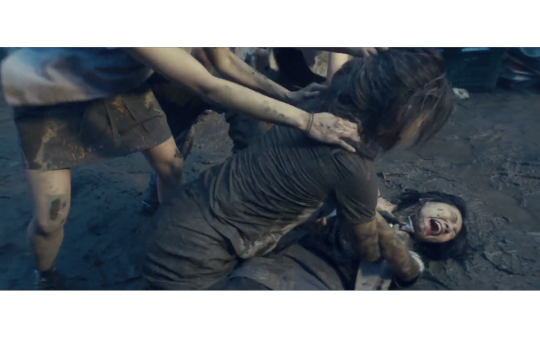
The backstory of the heroin, Jang Hee-soo, is revealed partway through the show. It is shown that she makes the decision at her old school to fight a group of bullies, seventeen in all. Because of her ability to regenerate, she leaves the fight without a scratch. There is an interesting dichotomy between her character and the US agent Frank, who also has the ability to regenerate. However, Frank is like a machine, a man who grew up in Iowa and has no motive but to complete missions. While Hee-Soo fights bullies, Frank is often the bully. Yet we see how similar the two characters actually are, as both are seen choking one of their enemies in their backstory. Frank having no concept of family is shown throughout his character arc, signaling that his fate would have been different with a better upbringing.

How do the superheroes question themselves, each other, and their obligations and duties to the people around them?
The protagonist, Kim Bong-seok, is forced to wear weights on his ankles and carry a heavy backpack to avoid levitating in front of other people. This decision is made by his mother, who is very overprotective. We learn later on that his mother acts this way because of the death of the father, who also had the ability to levitate. Because his mother is overprotective and at times very controlling, Bong-seok grows up very submissive. There is a moment in which he confesses that he does not like himself as a person and wants to change. Had he not been given powers, his character and personality would probably be much different.
youtube
#oxyspeculativetv @theuncannyprofessoro
12 notes
·
View notes
Text
How does the narrative aspect of genetic modification play out in this show? Are there cultural-historical themes of manipulation and power differences that reflect current metaphysical views?
We Don't Need Another Superhero
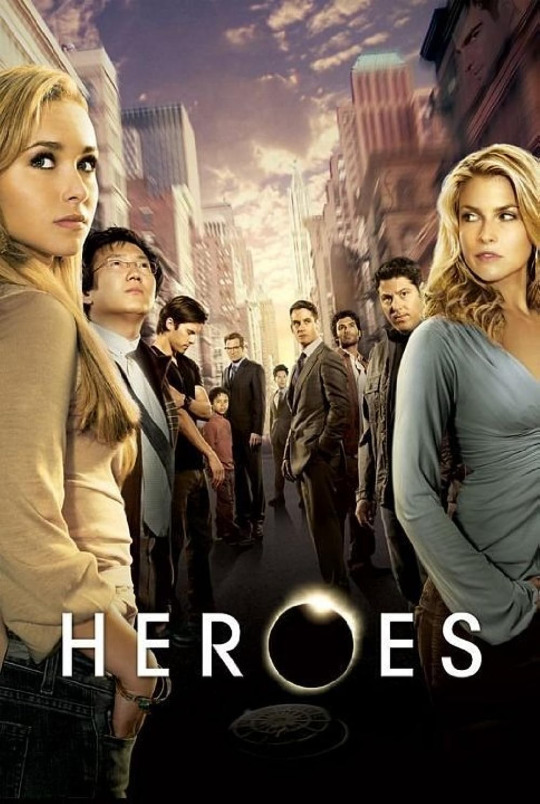
How do structural mythology, cultural studies, and cultural history reflect the series’ world and world-building around superheroes?
Similarly to many superhero shows, these characters have their abilities due to a serum/genetic manipulation. The show also explores how the idea of being a hero is integrated into our culture through media. One of the characters, Hiro, immediately goes towards saving the world and trying to having his hero’s journey, because that is what he sees in the media.
In what ways are the superheroes and their abilities informed by their racial, gender, sexual, and cultural identities?
I found it interesting that the main female heroes of the first season, Claire and Niki, both have abilities that allow them to transcend their gender expectations. Niki is a mom who had to do online sex work to pay off a mobster. Her ability of super strength allows her to enact violence on men, countering the expectation of her role. Similarly, Claire is able to recover from any injury, even if it kills her. This subverts the idea of a helpless cheerleader who needs to be saved by the men.
In what ways do costumes and concealing identities further separate the superheroes from normal society? How necessary is it for the superheroes to hide their true identities to successfully achieve their goals?
An interesting aspect of heroes is that, no matter how invested they are in using their abilities for good or evil, none of them wear superhero costumes. They all stay in their normal outfits. This represents how they are individuals that have lives outside of these abilities. Most of them do not want to be superheroes, but get dragged into the plot of saving the world. Staying in their own clothes allows them to preserve their individuality.
How do the economic, political, and social events that occurred during the series’ creation and broadcast cultivate and inform the superheroes’ decisions and actions?
I didn’t notice any major events that informed the series, but I think there is an overall fear of immigration that the series explores. Instead of directly talking it about, I view it more as an underlying fear, similar to monster novels like Dracula. Essentially, the idea that someone could look exactly like you, but not be technically human.
How do the superheroes question themselves, each other, and their obligations and duties to the people around them?
This questioning is the major selling point of the TV show. Many of the heroes do not want to be heroes; they just want to continue their normal lives. They end up getting dragged into either by other people with special-abilities or because of the government trying to round them up. It raises the important question of whether being able to do something requires you to do it.
@theuncannyprofessoro
13 notes
·
View notes
Text
In regards to the original The Boys, how heavy a role does media manipulation play in Gen V? Is there a cultural historical aspect that plays out as these young adults are growing up in a world with untrustworthy news sources?
Superhero Roundtable
Gen V (2023)
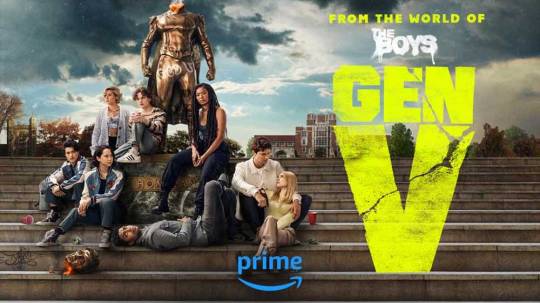
The series Gen V is a spin-off of The Boys series on Prime, it aired very recently with the season only wrapping up on November 3rd of this year. The show takes place in the same universe as The Boys and its timeline is meant to align and intersect a bit with the new season. Instead of focusing on the main adult superheros of the universe, Gen V chooses to center its narrative on the younger victims of compound V (Which is the drug people can take to potentially get powers). The show is set in a college that only ‘Supes’ can attend (think Sky High). There they are ranked and all aim for the number one spot and to be a part of the famous ‘7’ supe group. The show is similar to what I talked about in my Buffy roundtable but here demons are swapped with superpowers for adolescent woes metaphors.
How do structural mythology, cultural studies, and cultural history reflect the series?
As the show came out this year it's cultural studies and history is all very recent, and it specifically caters toward Gen Z. In doing so the cast is much more diverse than The Boys and earlier superhero shows. The main character is a young Black woman named Marie who’s love interest is a bigender Korean American who can shapeshift between two different genders of masculine and feminine. The friend group she also meets up with also consists of others diverse in background and ethnicity. The call for more diverse superheroes is definitely a product of more recent cultural values and changes, especially with younger people being the target demographic. The politics of the show also represent the recent political timeline with our generation's disappointment in the actions and lack of actions the government has taken on corruption with capitalism, climate change, etc . This can be seen with Vought International, the multibillion dollar conglomerate that founded the famous 7 and manages ‘supes’. The company also does entertainment, news, weapons, fast food chains etc. The corruption of the company and its supes, most notably its most powerful supe Homelander who’s villain arc mirrors Trump, really fits the current post Trump political climate. The structural mythology of supes in the show is interesting as well. Instead of the show having the classic Hero’s journey with its superheroes and their gaining of powers. The main characters of the show got their powers from their parents injecting them with Compund V so they could profit off of their abilities. The superpowers they have are often the root of their trauma. The main character, Marie, has blood controlling powers that manifested on her first period and led her to accidentally kill her parents in front of her sister. Overall, this pessimistic view of superheroes and their powers is really reflective of our current political and cultural landscape.
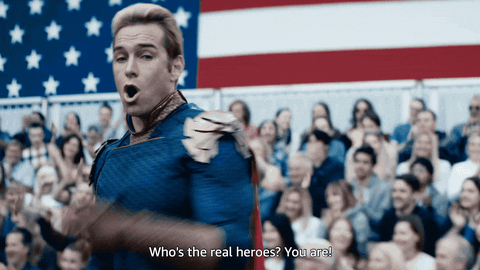
In what ways are the superheroes and their abilities informed by their racial, gender, sexual, and cultural identities?
One superhero that exemplifies the concept of their abilities being informed by their identities—specifically gender—is Jordan Li, the bigender Korean American who can shapeshift between two different genders of masculine and feminine that I previously mentioned. Through Jordan Li’s super powers the show is able to mythologize gender fluidity and identity struggles. In this clip, Jordan is talking to their parents who are upset that their developing powers gave them the ability to shift from a boy to a girl. Jordan has to explain that they are still themselves in both forms and have always been the same, but their father still disapproves.

In what ways do costumes and concealing identities further separate the superheroes from normal society? How necessary is it for the superheroes to hide their true identities to successfully achieve their goals?
In the Gen V the superheroes identities aren’t concealed from the public but they do have superhero personas that they are more known by in the public and media sphere. The celebrity-like status they have with their super personas is used to other them and commodify their powers to entertain others as a spectacle. One example of this is with the character Emma whose superpower is her ability to make herself change size. At school she is majoring in becoming a super influencer basically and goes by the persona ‘Little Cricket’ for her popular youtube channel. While her channel is popular we learn that it really is her mother wanting to profit off of her abilities and doesn’t care that she has to throw up and purge in order to change herself. Her power is also fetishized by a male classmate who wants her to get small while they are intimate. So in Gen V the creation of separate identities is not used to achieve their own personal goals but is instead taken advantage of by non-supes to capitalize off of.
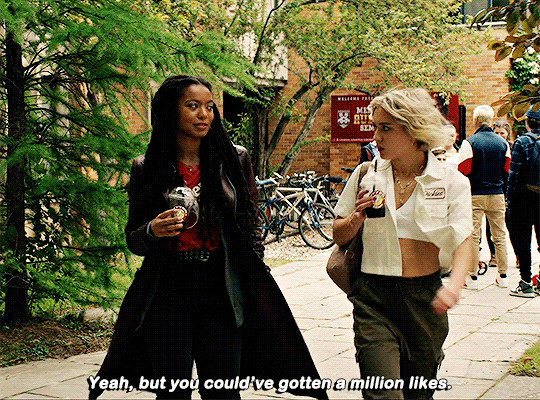
How do the economic, political, and social events that occurred during the series’ creation and broadcast cultivate and inform the superheroes’ decisions and actions?
In the series there is a very ‘us vs. them’ mentality between the supes and non-supes that is reminiscent of the current political climate. In episode 7 a senator comes to the school for an interview and it ends in a riot. The senator runs the Federal Bureau of Superhuman Affairs which seeks to monitor and investigate Supes and stop them from harming others. In the panel Senator Neuman is trying to pander to both sides, with boos and applause for each statement as the students are split between wanting to punish Supes like Homelander for killing innocent people or for thinking that not supporting him is Anti-super. As the episode description shows,
Calling all God U #Hometeamers! Today we’re protesting Socialist Victoria Neuman’s town hall on campus! Let’s show Neuman and her Supe-hating woke mob that we won’t put up with their anti-Superhero agenda! THEY WILL NOT CONTROL US! #MakeAmericaSuperAgain #SupeLivesMatter
The supe vs non-supe divide is very politicized with it mirroring liberal and conservative ideals of the spectrum. The situation is very polarizing and the “Supelivesmatter” crowd ends up disrupting the panel and it becomes very violent. The show is not very subtle with its mirroring of Blue Lives Matter and MAGA, especially with Homelander being a stand in for Trump. This is the central conflict between America’s general super population and their actions demonstrating the impact of our own political news cycle on the show.

How do the superheroes question themselves, each other, and their obligations and duties to the people around them?
In the show characters are constantly questioning intentions, who to trust, and what is right and wrong–especially within the supes and non supes dichotomy. The main characters are grappling with if the pain and violence that their powers have inflicted on others unintentionally are actually their fault and dealing with their guilt and self hatred for it at the same time.

This really leads to the central conflict of if their obligations are to use their powers to protect themselves or the non-supes that put them in the position of having these powers in the first place. The show is really complex in its portrayal of this as in the final scene of the show you are really left wondering what is the right thing to do alongside the characters as they decide who they should side with. Gen V is unique because while in The Boys the superheroes are more villainized but in Gen V it’s more unclear as we are able to see through following the adolescent super perspective it wasn't their fault. It is only at university that Marie and other students are able to begin to realize that the violence and trauma their powers have inflicted on their families and other non-supes is not their own but their parents' fault for injecting them with compound V in the first place.

The fact that their parents did in want of fame and fortune promised by Vought International, really shows that capitalism has been the real villain all along.
“Your parents shot you up with a dangerous drսg when you were a baby to make a buck off you. Don't spend a fսcking minute crying over them”

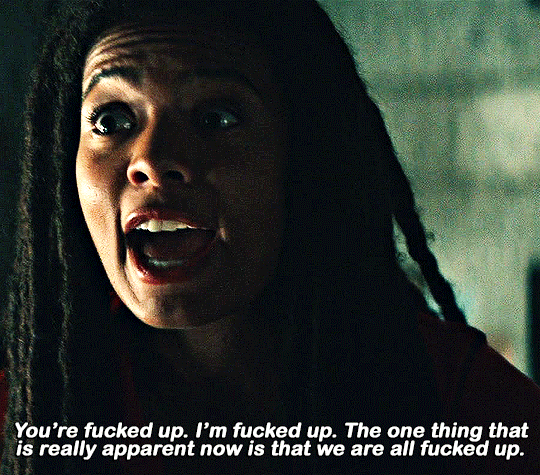
@theuncannyprofessoro
16 notes
·
View notes
Text
How do you feel that being in such a huge and established cinematic universe affects a show's ability to flesh out new ideas and new stories? When it's not a blockbuster movie with funding that creates certain demands, are shows able to tell more unique and maybe more progressive stories?
Falcon and the Winter Solider (2021)
youtube
"The Falcon and The Winter Soldier" picks up the narrative immediately after the events of "Avengers: Endgame." The series navigates the post-Captain America era, with Sam Wilson (Falcon) grappling with the decision of accepting or rejecting the iconic shield. Simultaneously, a new government-appointed Captain America, John Walker, enters the scene. Against the backdrop of global conspiracies involving the Flag Smashers and the mysterious Power Broker, the storyline weaves together the struggles of identity, legacy, and responsibility. Within this narrative, the series tackles themes of racism, socio-economic disparity, and the quest for justice, elevating it beyond the confines of traditional superhero storytelling.
How do structural mythology, cultural studies, and cultural history reflect the series’ world and world-building around superheroes?
Structurally, the series follows the archetypal hero's journey, exploring the burdens and responsibilities that come with wielding superhuman abilities, particularly in the context of the iconic Captain America shield. This mythological framework serves as a foundation for the characters' development and the overarching narrative.
In terms of cultural studies, the show delves into contemporary societal issues, addressing systemic racism, socio-economic disparities, and displacement. The decision-making around Sam Wilson's acceptance of the Captain America role reflects a nuanced exploration of racial identity and societal expectations, contributing to a broader discourse on representation within the superhero genre.
Cultural history is interwoven into the narrative, notably through the aftermath of significant events like the Blip. The series reflects on the impact of these events, shaping the characters' identities and motivations. By grounding the superhero narrative in historical context, it adds layers of complexity to the world-building, making it more reflective of real-world dynamics.
In what ways are the superheroes and their abilities informed by their racial, gender, sexual, and cultural identities?
The series places a magnifying glass on the racial identity of its lead character, Sam Wilson, as he grapples with the legacy of the Captain America shield. Sam's hesitation to assume the role immediately isn't solely rooted in self-doubt but reflects a profound awareness of the racial implications of becoming the symbol of American heroism. The show captures the struggle of a Black man reconciling with the expectations placed on him in a society that has historically excluded and marginalized people of color.
In what ways do costumes and concealing identities further separate the superheroes from normal society? How necessary is it for the superheroes to hide their true identities to successfully achieve their goals?
In "The Falcon and The Winter Soldier," costumes and concealed identities play an important role in delineating the boundary between superheroes and normal society. A prime example is Sam's adoption of the Captain America mantle. When he initially decides not to take up the shield, he grapples not only with the weight of the responsibility, but also with the racial implications of becoming the symbol of American heroism. The iconic Captain America costume, with its patriotic colors and distinctive shield, is not just a uniform; it carries profound symbolic weight. Sam's eventual acceptance of the costume is not just a personal decision, but a statement about the transformative power of symbols and the role costumes play in defining superhero identities.
Practical necessity comes to the forefront for the character of Karli, the leader of the Flag Smashers. Her adoption of a mask aligns with the group's anti-establishment stance, but it also serves the purpose of protecting her identity from their enemies.
The series also addresses the consequences of revealing identities. John Walker, the government-appointed Captain America, faces backlash when his identity is exposed after a controversial incident. The lack of anonymity intensifies the scrutiny on his actions, showcasing the vulnerability that comes with a public persona.
How do the economic, political, and social events that occurred during the series’ creation and broadcast cultivate and inform the superheroes’ decisions and actions?
"The Falcon and The Winter Soldier" unfolds against the backdrop of real-world events, resonating with the racial justice movements of its time. The series discusses police brutality, racial profiling, and the struggles of marginalized communities, drawing explicit parallels to the Black Lives Matter movement.
How do the superheroes question themselves, each other, and their obligations and duties to the people around them?
Throughout the show, Sam questions whether he, as a Black man, can truly embody the symbol of a nation that has historically marginalized people of color. Sam's introspection goes beyond the physical demands of heroism, extending into the realm of identity, representation, and personal sacrifice.
Bucky Barnes, the Winter Soldier, engages in a profound self-examination as he grapples with his dark past and seeks redemption. His internal conflict revolves around reconciling the actions he was forced to commit as a mind-controlled assassin.
19 notes
·
View notes
Text
Despite the fact that the show bounces around from time period to time period, do you feel the values and themes that arise out of those different periods align with current morals and ideas? In other words, are they past events modernized into our current period?
The Umbrella Academy- We Don't Need More Superheroes

The Umbrella Academy (2019) is a show that follows a group of adopted siblings, each with their own power, and their journey to solve the mystery of their father’s death and save the world from an impending apocalypse.
How do structural mythology, cultural studies, and cultural history reflect the series’ world and world-building around superheroes?
The Umbrella Academy is set in present day (2019) yet plays around with time and timelines throughout the narrative, as one of the siblings Five has the ability to manipulate time. As for structural mythology, the show is based on the books, yet as a viewer who is unfamiliar with the original content, I would say the show is definitely set up in a mystery, as we are introduced to the siblings in the first episode, yet are constantly in the dark when it comes to the reasoning behind the 43 births and what caused it. Though the narrative setup of the death of guardian/father figure, Dr. Reginald Hargreeves, brings the siblings together to mourn his death, Hargreeves is still shrouded in mystery. What is appealing about Umbrella Academy is the diversity of the siblings themselves, and how they go through their own individual experiences dealing with their powers and how they come together to try and stop the impending apocalypse and save the world. As for cultural history, the show does include many significant moments of history, as many scenes take place in the past due to the constant time warping in the show. For example, the Vietnam War, Civil Rights Movement and even the assassination of JFK are all a part of the show, and each siblings’ experiences in the “past” have a direct impact on their own journeys and also their future.
In what ways are the superheroes and their abilities informed by their racial, gender, sexual, and cultural identities?
To my knowledge there is not necessarily connections between the siblings' abilities and their racial/gender/sexual/cultural identities. But, there are definitely ties between each siblings' emotions and their abilities, especially when it comes to sibling 7 Viktor. At the beginning of the series, Viktor is known as the sibling without any powers, and is ridiculed and ignored by Hargreeves as a result. Viktor sees himself as useless compared to his siblings, but it is later revealed that Hargreeves used pills to suppress Viktor's powers of manipulating sound into physical force because he deemed them to be too dangerous. Viktor unlocks these powers after not taking the pills anymore, and releases his full potential, but struggles to control his powers.
In what ways do costumes and concealing identities further separate the superheroes from normal society? How necessary is it for the superheroes to hide their true identities to successfully achieve their goals?
When the Umbrella Academy is younger and growing up under the tutelage of Hargreeves there is a specific uniform the children wears, which features a school-like red and gray uniform and the iconic and traditional superhero mask. I think most of the difficulties when it comes to the siblings lives is that they each have their own desires aside from their constant missions and family drama. As they encounter different experiences in different timelines, the siblings find love, careers they care about, and other things that are separate from being superheroes.

How do the economic, political, and social events that occurred during the series’ creation and broadcast cultivate and inform the superheroes’ decisions and actions?
In Kevin D. Williams’s “(R)Evolution of the Television Superhero: Comparing Superfriends and Justice League in Terms of Foreign Relations" Williams discusses how many political events and ideologies have a direct impact on the narratives and ideologies of superheroes, specifically with political climate post Cold War and post 9/11. The second season of "The Umbrella Academy" takes place mostly in the 1960s, as at the end of season 1, sibling Five saved all his siblings by taking them to the past, and they are now scattered and each experiencing their individual lives in the 60s. This places all the siblings during Cold War era US, and the narrative specifically forms around JFK's assassination and the Civil Rights Movement, which specifically impacts Allison the most. Allison becomes an active member of the Civil Rights Movement and describes her motivation and empowerment to exist outside her scope of superhero powers, which involve manipulation. I think it is interesting that the show includes the self-doubting aspect of being "super" in some ways because I think it helps make the characters feel more authentic if they're concerned how their powers impact themselves as humans. In season 2, Allison participates in a sit-in at a whites only diner and uses her powers to manipulate a police officer to stop beating her husband Ray. This causes him to run away from her because he is afraid, but the two later reconnect.
How do the superheroes question themselves, each other, and their obligations and duties to the people around them?
Because the main superheroes are siblings, it makes for a really interesting dynamic to watch onscreen. Not only are they a family, but an estranged one that has just been reunited due to the death of their father. Of course they act just like any siblings and question themselves and each other. Because Hargreeves literally numbered them off based on their "usefulness" to him (#1-7) their childhoods were definitely not normal in the sense that he was raising them to serve him. Especially for Viktor, their childhood was extremely traumatizing and his history with certain siblings even causes fights and tension in the present timeline. During one episode, it is revealed Hargreeves instructed Allison to use her powers to manipulate Viktor into forgetting that he had powers. This relevation causes Viktor to lash out at Allison, which speaks to how the siblings' turbulent history still has impacts on their current relationships with each other.
@theuncannyprofessoro
18 notes
·
View notes
Text
How do you think the aim of comedy affects our understanding of the mythology of superheroes and how the show is narratively structured? Does the absurdization of superheroes for comedy alter or decenter the superhero in our culture? (Even if it is still centered in the show)
The Venture Bros.
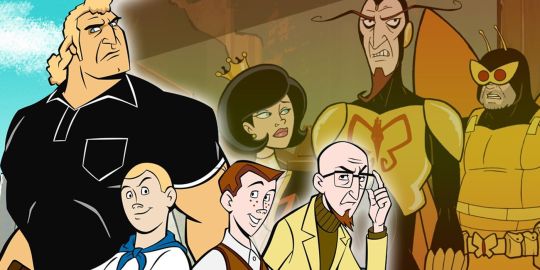
The Venture Bros. takes many assumptions from the Golden and Silver Age of comics and comments on them. It parodies certain elements of comic book history, including ‘the boy adventurer’ (Jonny Quest) trope and space-age fiction themes and aesthetics. The series follows Dr. Thaddeus “Rusty” Venture, a sad failure of a Super Scientist living in the shadow of his late larger-than-life father, Dr. Jonas Venture. Rusty is a superhero in title but not in practice, yet he still has a rotating cast of villains and sidekicks around him. His arch nemesis is a villain called The Monarch, who I focus on for this piece. I think Rusty represents the more cynical, morally ambiguous Silver age of comics while his father represents the authoritarian Golden age, to put it into Williams’ framework from “(R)Evolution of the Television Superhero”. The Venture Bros contributes to a misanthropic view of superhero narratives. All of the characters have major flaws directly connected to their association with Super Heroism and its flipside, Super Villainy. Changes in values over time are shown in the narrative through flashbacks and convoluted storylines involving many characters over several seasons. Overall, though, the series pokes fun and levies criticism against prevalent superhero notions.
The Monarch, Dr. Venture’s Arch Nemesis, is a scrawny, goateed, middle-aged white male who has made a career out of being evil. In some ways, he is very successful, with an awesome spaceship headquarters, a team of devoted henchmen, and a sexy villainess girlfriend. However, the Monarch is shown to oscillate between overconfident and insecure, as seeking validation, and as unable to thwart his self-proclaimed nemesis, no matter how many opportunities he gets.

The Monarch represents an attitude of dissatisfaction among men who actually have quite a bit going for them. I feel like this reflects a culture of misplaced victimhood held by some men as the liberation of women and other oppressed groups makes them feel like they are losing some kind of power or status.
The Venture Bros. is all about funny costumes and character design. The Monarch has leaned all the way into his butterfly-and-insect-themed villainy. His costume is an integral part of his character, and he is rarely seen without it.
His voice and mannerisms are enough to make the Monarch recognizable even when he is not in costume, but he derives much of his power from his outfit, the consistent theme of his evil operation, and his flashy technology. The Monarch has a hard time performing villainy when not in costume. In this universe, Villany is a career, and the job requires a uniform.
The show is definitely influenced by 9/11 and the entrance of Gen Xers into the media scene. The show debuted in 2003, when the Cold War Kids (not the band) were finally entering the workforce and the public eye and expressing their feelings and attitudes about social and political realities of the time. The Monarch is an expression of social, economic and political disillusionment that can go in divergent directions and lead to extremism. Venture represents apathy and adherence to established systems, despite their idiocy.
In Season 1 Episode 5 of the Venture Bros., the viewer gets a glimpse into the more neighborly side of superheroes and supervillains as they are introduced to members of The Guild of Calamitous Intent when Venture hosts a yard sale at his compound and invites all the Villains he works against, with the understanding that no harm can come to him because it is not guild-approved and therefore the villains have no legs to stand on in terms of evil. Even so, the Monarch, Dr. Venture’s sworn enemy, wreaks non-approved havok at the yard sale. In search of a suitable bathroom, Monarch and Dr. Girlfriend walk through the compound and see the sad emptiness of Dr. Venture’s life. For a moment it seems the Monarch has a realization about his Villainy and almost gives up “Arching” Dr. Venture, but when the security team gives him a fright, the Monarch vows to destroy Dr. Venture and reconstitute the Nemesis status.
I think this faltering of ideology that the Monarch experiences shows how perceived obligations are subject to change situationally. This applies to foreign relations because attitudes about domestic policy, domestic views on other countries, and also relationships between nations and states are products of history but also are fluid.
@theuncannyprofessoro
21 notes
·
View notes
Text
How do you feel cultural history and modern conceptions of family inform this show? Similar to shows we have watched that place emphasis on the idea of found family, how does this play out with superpowers in the mix?
Raising Dion

Raising Dion is a superhero show that premiered on Netflix in 2019. The show follows recently widowed mother, Nicole, and her son Dion who starts at a new school. They are under the impression that her husband and Dion’s dad, Mark, had drowned, although his body was never found. The conflicts that arise as Nicole raises Dion on her own are heightened when Dion begins to manifest several superhero-like abilities. Some of these include: telekinesis, flight, teleportation, healing, and invisibility. Nicole works to keep Dion’s powers a secret out of fear for his safety. With the help of Mark’s best friend, Pat, the two work to help Dion channel and control his powers, while they work to figure out where his powers came from. The main villain is called “Crooked Man,” and appears as more of a large outline/entity rather than a human. The Crooked Man seems to be brought together by energy, appearing as a large figure made out of lightning.
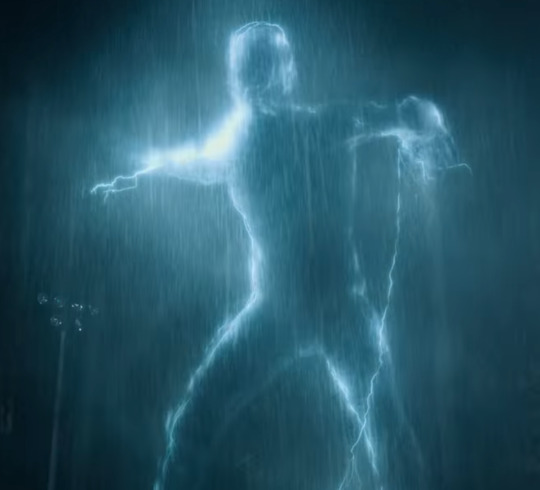
How do structural mythology, cultural studies, and cultural history reflect the series’ world and world-building around superheroes?
The show embodies the basic structural mythology of superhero shows. This includes Dion uncovering his powers in a dramatic and unexpected scene with his mom in their home. Following this there is his initial call to adventure as he learns to control his powers while facing the challenges of the Crooked Man who wants to kill Dion in order to gain his power. He experiences the known trope of a mentor, in this case, his late father’s best friend Pat. Although it seems that Pat does not have powers himself, he works to understand Dion’s abilities and attempt to uncover where they may have come from. In addition to Pat, Nicole tracks down a woman named Charlotte Tuck, who also has powers like Dion’s, in order to help him learn. Throughout the season, Dion becomes more powerful and more equipped to fight the Crooked Man. The series is made up of a very diverse cast and the director, Dennis Liu, has spoken about his desire to allow minority populations to see themselves depicted as the ultimate superheroes on television. The show explores non-traditional family structures, such as single-parent households and families with extraordinary abilities. This can be examined in the context of societal norms and how the show both reflects and challenges these norms. The series is set in contemporary times, and events in the story are influenced by the cultural and technological context of the present day. I feel that this is best exemplified throughout the second season, with more emphasis on BIONA, which was the organization that Dion’s father worked as a scientist for. BIONA is a research institute that studies climate and climate change.
In what ways are the superheroes and their abilities informed by their racial, gender, sexual, and cultural identities?

The series, and Dion in particular, are informed by racial identities in many ways. As a young Black boy, a number of his experiences are influenced by his race and the stereotypical ideology that surrounds the Black race. This is exemplified in season one, episode three: “Watch Man.” Dion has begun wearing a watch that belonged to his dad. Despite previously having issues controlling his powers, Nicole makes him believe that it will help him channel his abilities more effectively. In this episode, Dion is talking to his friend Esperanza about his watch. When she suggests they use it for a project, Dion explains that it is just for him. A bully in his class overhears this and later convinces Dion to give it to him for a magic trick. When the boy will not return the watch, Dion becomes frustrated and accidentally throws him against a wall with his mind. When the principal brings the boys to his office, he gives Dion a two day suspension and does not punish the other boy. Dion is a young Black boy and the bully and principal are white. This scene highlights the racial prejudice that the principal uses to inform his discipline. This scene prompts Nicole to have a conversation with Dion about his skin color and how this affects situations he may be in and why the principal did not punish the bully. The series shows gender identity most clearly through Nicole. Despite her not having literal superpowers, she is shown to be a strong, independent single mother who faces Dion’s upbringing head on and works to keep him safe and provide the best life she can possibly give him.
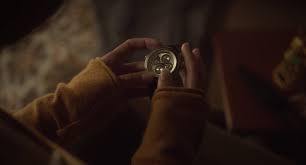
In what ways do costumes and concealing identities further separate the superheroes from normal society? How necessary is it for the superheroes to hide their true identities to successfully achieve their goals?
Most commonly, in superhero shows, costumes allow individuals to conceal their identities, although most of the time not very effectively. In Raising Dion, his superhero costume strays from this typical portrayal. As a seven year old boy, his imagination is a stronger tool in regard to his superhero powers. He does not have a high-tech suit, but a red shirt with the initials MM on it, alluding to his nickname “mind mover.” He also sports a pair of goggles throughout the show. I would say that although not being a costume, the large watch that Dion wears serves as an object that gives him confidence in his abilities, and is something that he feels gives him unique power. In terms of concealing his identity, again as a young boy who is still attempting to live his everyday life, it is rather that the adults in his life have instructed him so clearly to conceal his powers themselves, that he is not often needing to conceal his identity in public. Season one of the show in particular focuses on him honing his powers and uncovering the root of them, rather than him saving individuals in the city whenever they are in minor danger, like Superman for example.
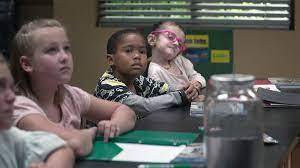
How do the economic, political, and social events that occurred during the series’ creation and broadcast cultivate and inform the superheroes’ decisions and actions?
The series deals with racial discrimination, specifically the scene with the principal that I discussed above. Discrimination and prejudice against the Black population remains extremely prevalent, and seeing the scene where an adult projects this ideology onto young students, instead of hearing what Dion has to say, alludes to a greater number of instances. This includes police brutality, specifically assaults and murders that have occurred as a result of this white supremacy. In addition to this, there is a particular instance where Dion learns about ableism. His friend Esperanza has brittle bone disease, which forces her to remain in her wheelchair at all times. Dion takes her into a classroom in season one, episode eight, lifting her out of her wheelchair with his power, making her fly. He does not explain what he is doing and his act is met with discomfort, asking him to put her down and questioning why he would do that. He explains that he thought she would have wanted to walk and that everyone wants to fly. Esperanza leaves the room without saying anything, leaving Dion confused. After school, he asks Charlotte Tuck why she was so upset, and Charlotte asks Dion if he really knows anything about why she is in the wheelchair, or if she has ever walked before. This aids him in making better and more respectful decisions while using his powers with his friends.

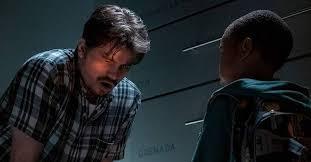
How do the superheroes question themselves, each other, and their obligations and duties to the people around them?
This has been the case for most of these questions, but I think that because Dion is such a young superhero, he is not the one to fully understand the weight of his abilities and why that makes him a target for villains. We see him questioning his actions when he makes mistakes with his power and when his emotions are heightened. However, I think it is the adults that we see in the show, Nicole, Pat, Charlotte, and his aunt, Kat, that do the most questioning. They are mature and able to see the effects of the power that Dion has, and to understand why this must be concealed for his greater good. This weighs most heavily on Nicole. As a single mother, she must deal with keeping Dion safe as well as keeping him happy. When he first discovers his powers, she keeps him out of school while they work on controlling them. Eventually, he asks her if he can go back to school and she must deal with the potential danger that this may cause while also understanding that it is what her child wants to do, just like all of the other kids.
#oxyspeculativetv
@theuncannyprofessoro
11 notes
·
View notes
Text
Does the show put more emphasis on the economic structure of a new world changed by superpowers or is there still a typical hero's journey of a superhero fighting for good?
Superheroes Roundtable: "Extraordinary"


In this world, everyone over the age of 18 develops a superpower, except for the main character Jen, who is 25-years-old, and who feels like she’s been left behind. Jen’s flatmates – Carrie, Kash, and a mysterious stray – keep her from falling into a well of self-pity. Through the series, Jen begins her journey to find her maybe-superpower. In doing so, she eventually discovers the joy of being just ok. It is quirky, funny, and light-hearted and weaves characters' superpowers into their emotional journeys.
How do structural mythology, cultural studies, and cultural history reflect the series’ world and world-building around superheroes?
The “superheroes” are basically everyone that has a power, so pretty much everyone over the age of 18, except for the main character, Jen. Superheroes in this series are very different from how you would normally think of superheroes, in many ways, and mainly that the people who have powers are seen to be normal, and the people who don't are not normal. In addition, the powers vary from really useful and powerful, to not so much. Some powers include flying, super-strength, invisibility, emotion-reading, foresight, super-speed, shapeshifting, and quirky ones like summoning sea-creatures, causing anyone around you to generate a diegetic soundtrack based on their emotional state, creating a pdf out of anything, or being a magnet. The superpowers are relatively new to the world as people only started getting them 10 years ago. The show is very modern and the world in the show has adjusted incredibly well to this strange turn of events; people who can fly even work as what appear to be human Ubers, zipping passengers across London. The show can be seen as a commentary that shows us how our capitalist society could/would utilize superpowers. In addition, the show is so modern that it feels realistic in the way that it portrays what would happen if we all had superpowers. Other than some people maybe using their powers for good, there are still criminals and all things bad in the world. There are people exploiting others for their powers and even a whole company called the "discovery clinic" whose job it is to help you find powers. What they are doing is exploiting people who don't have powers for a lot of money.

In what ways are the superheroes and their abilities informed by their racial, gender, sexual, and cultural identities?
Carrie, one of the main characters, was tasked with utilizing her unique superpower of channeling the deceased to channel a dead musician in order to complete his album. She was to be paid 300,000 pounds, but his lyrics were so steeped in sexism that it made her uncomfortable with the prospect of enabling such content. So, she returned to her normal self and changed the lyrics and instead infused a feminist perspective into the song. One of the lyrics now being “lord she had a mouth that was only good for…measured debate.. And an ass that screamed ‘respect me as an intellectual equal’”. The dead musician singing the lyrics and the people in the recording studio caught on, and she did not end up doing the job, and getting the big sum of money. But the incident highlighted how her identity as a woman informed her decision to use her superpowers in an attempt to stand up for women and stand against sexism.
In what ways do costumes and concealing identities further separate the superheroes from normal society? How necessary is it for the superheroes to hide their true identities to successfully achieve their goals?
In the series, there is an absence of traditional superhero costumes, as individuals with powers don't feel the need to conceal their true identities. The characters all appear outwardly normal,and you cannot tell what someone’s superpower is just by looking at them. One character, Olivia, possesses the ability to shape-shift, a power that could easily be exploited for various purposes. However, she says she barely uses it because she thinks “it's important to love yourself the way you are.”
How do the economic, political, and social events that occurred during the series’ creation and broadcast cultivate and inform the superheroes’ decisions and actions?
One of the main characters, Kash, can rewind time by a few minutes at will, and is an aspiring vigilante. We see him in the first episode wearing a superhero costume he created for himself that has a bodysuit and a cape. He does not have a job and feels it is his “destiny” to be a hero. He states “ I'm gonna assemble a team of vigilantes, this is my origin story, quick take a picture!” and says he's “ doing this for the city, for the vulnerable.” After he puts together a group of four vigilantes, they all have a meeting and decide what type of crime they are going to fight. They focused on the social issues around them and stated their ideas for targeting child sex offenders, murderers, people who scam the elderly (telemarketers), drug dealers, people who put their bag next to them on the empty seat in the train, and rapists. But they ultimately decided on protecting women and doing things like helping them walk home at night if they are alone. The social issues surrounding them inform their decisions on who needs protecting.
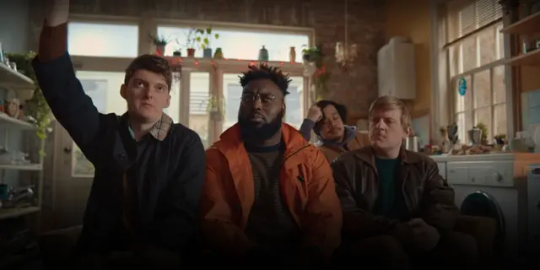
How do the superheroes question themselves, each other, and their obligations and duties to the people around them?
Different characters in the show feel different ways about their superpowers. Some who have powers such as strength or speed very much enjoy their powers and think they’re better than others. Yet, other characters feel they would be better off without their powers or that their powers bring them down as human beings. Some characters relate to the quote from the article “the characters of Justice League are more self-doubting and often wish they had some reprieve from the heavy responsibility carried by one endowed with superpowers. Some episodes end with a hero longing for the past and for a more innocent time in their youth when they were not a superhero.” The character Carrie, who is a conduit for dead people, mostly works sorting out estate disputes as a human ouija board. A lot of the time she feels she is only being used for her powers, and that it’s the only reason people want to hire her, not because of how smart or a good-worker she is. She states “Nothing is the same after you get your power.” In addition, there is one character whose power is that he makes people orgasm with touch. When people first meet him they think it's cool, but he does not like it. He has to wear gloves all the time, or kiss people with saran wrap in between their mouths to avoid direct contact. He wants to be able to achieve certain things on his own, not just because of his power.

13 notes
·
View notes
Text
How do you think the fact that this series takes place in such a fleshed-out universe with such a reputation affects the ability of the show to play out a new story? Does that help or hinder creativity within the Marvel Universe?
Panel Presentation: Moon Knight
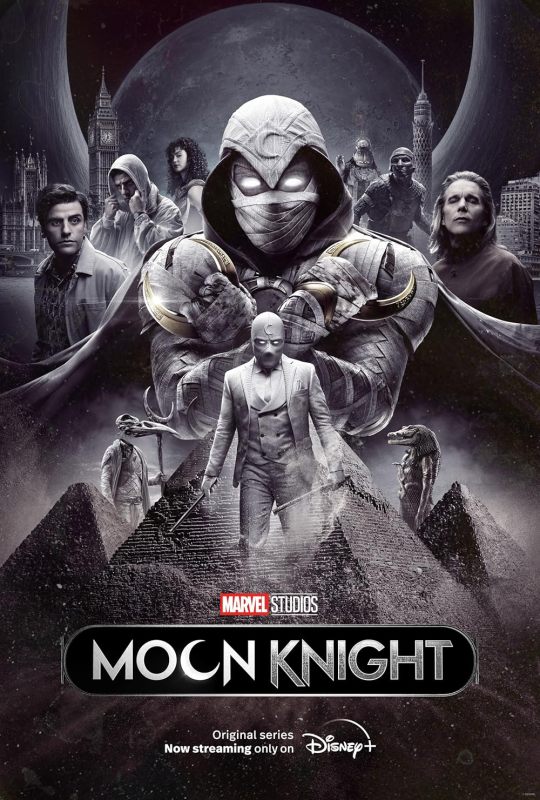
Moon Knight centers around Steven Grant, an unassuming employee at a museum gift shop, whose life is disrupted by episodes of memory loss and recollections of an alternate existence. Uncovering the presence of dissociative identity disorder within himself, Steven realizes that he coexists in the same body with the mercenary Marc Spector. As adversaries of Steven/Marc close in on them, the duo must grapple with their intricate identities while being entangled in a perilous enigma involving the formidable gods of Egypt. Like the narrative of Justice League analyzed by Kevin D Williams, Steven Grant experiences violence and struggle that impacts his own mental health.
How do structural mythology, cultural studies, and cultural history reflect the series’ world and world-building around superheroes?Moon Knight intricately navigates the multifaceted landscape of superhero storytelling by incorporating a rich tapestry of structural mythology and cultural exploration. The portrayal of Marc Spector's dissociative identity disorder adds a layer of psychological complexity to the character, challenging traditional superhero archetypes. The series deftly delves into Egyptian mythology, weaving a narrative around gods like Khonshu and Ammit, thereby expanding the cultural dimensions of the Marvel Universe. The inclusion of characters like Layla El-Faouly contributes to a more nuanced representation, avoiding clichéd racial tropes and broadening the spectrum of identities. By hiring Egyptian director Mohamed Diab, the show not only authentically embraces its cultural backdrop but also fosters diversity behind the camera. Moon Knight emerges as a sophisticated and culturally resonant contribution to the evolving landscape of superhero narratives.
2. In what ways are the superheroes and their abilities informed by their racial, gender, sexual, and cultural identities?
Superheroes and their abilities are deeply influenced by their cultural and identity backgrounds, offering a nuanced exploration of diverse perspectives. Moon Knight, for instance, introduces layers of cultural complexity by delving into Egyptian mythology and presenting characters with multifaceted identities. The show's portrayal of mental health issues further adds depth to the narrative, contributing to a broader conversation about the intersectionality of identity within the superhero genre. While normally superhero’s abilities are formed or enhanced by solely the supernatural, Moonknight’s abilities take aspects from his dissociative identity disorder and form distinct characters.
3. In what ways do costumes and concealing identities further separate the superheroes from normal society? How necessary is it for the superheroes to hide their true identities to successfully achieve their goals?
In "Moon Knight," costumes and concealed identities play a vital role in delineating the titular hero from normal society. The character of Marc Spector/Moon Knight grapples with dissociative identity disorder, which adds layers of complexity to his personas. The various costumes represent distinct facets of his psyche, blurring the lines between reality and the supernatural. This intricate dance between identities not only mirrors the broader theme of duality prevalent in superhero narratives but also underscores the character's internal struggles. In the second episode, Steven is asked to manifest his suit in order to fight a creature, but the character talking to him knows Marc - an alternate identity completely different from steven. Steven forms an all-white three-piece suit, not understanding what she means. This departure from the conventional superhero costume aligns with the series' thematic focus on internal conflicts and emotions externalized through these superhuman personas. Steven's unique vision of a "super suit" reflects his unfamiliarity with traditional superhero tropes, offering a distinct perspective on the concept.
4. How do the economic, political, and social events that occurred during the series’ creation and broadcast cultivate and inform the superheroes’ decisions and actions?
In the backdrop of "Moon Knight," the socio-political landscape of the last decade likely influenced the series, fostering a more progressive tone in superhero narratives. Especially with the rise in popularity with superhero franchises, there seems to be an increased amount of representation in superheroes. Many modern adaptations of comic superheroes take liberty and alter the story and characters in order to be more inclusive and appeal to the modern audience. Moon Knight seems to foster healthy conversations about mental illness and doesn’t treat it like a foreign and unnatural thing. The main identity of Steven is also not the stereotypical macho superhero, and he has to grow into this new unfamiliar character. Decisions and reactions to things mirror his timidness (at least initially), offering a new and refreshing perspective on superhero personas.
5. How do the superheroes question themselves, each other, and their obligations and duties to the people around them?
Steven’s internal conflicts, mirrored in the manifestation of different personas like Mr. Knight, illustrate the complexity of questioning oneself and grappling with duty. Steven's struggles go beyond conventional superhero tropes, incorporating personal identity, psychological battles, and a unique interpretation of what being a hero means. In the first episode, Steven is manifested by an ancient Egyptian god, but struggles to grapple with the alternate identity that becomes present. A domming voice commands him to do things, even when Steven as a person does not. His body becomes a sort of puppet to this entity and gradually has to submit to his demands. He is even transparent to his coworker about a fight he had with a creature overnight at the museum, trying to explain how insane of an experience it was. This diverts from traditional superhero inceptions, where they must keep their powers and identities secret. The show's exploration of Steven's internal conflicts and obligations contributes to the broader trend in superhero storytelling, emphasizing the psychological and moral dimensions that enrich the character and resonate with audiences on a deeper level.
@theuncannyprofessoro
16 notes
·
View notes
Text
How significantly would you say that the television series altered or modernized the original comic series? Are there major plot points that are erased or are they reshaped through a more modern lens?
Superhero Roundtable: Invincible
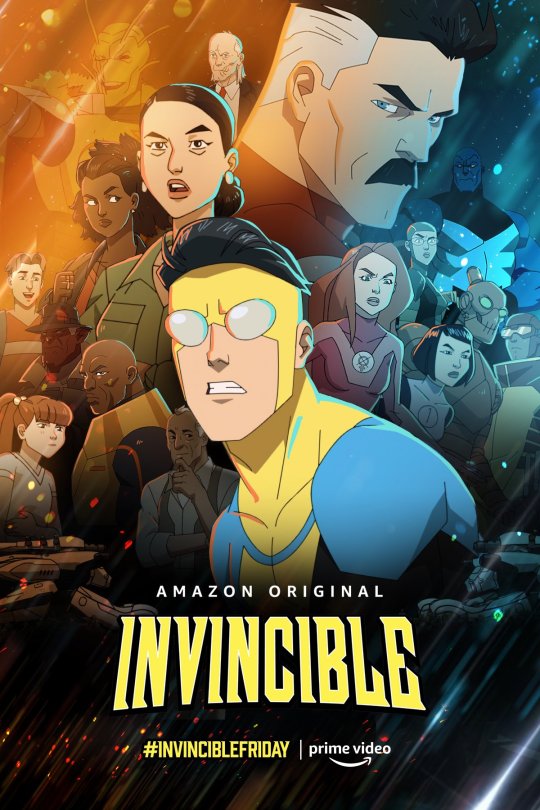
How do structural mythology, cultural studies, and cultural history reflect the series’ world and world-building around superheroes?
Invincible, much like many modern iterations of the “Capepunk” superhero genre that explores superheroism in a “realistic” manner accompanied by dark comedy and gruesome conflicts, offers commentary and its own unique premise on the cultural studies, cultural history, and structural mythology especially. The structural mythology of the show that initially borrows and parodies the structural mythologies of shows like The Justice League (2001) constantly explores what it means to be a hero through the main character, Mark Grayson. The 17-year-old half-human-half-Viltrumite high school student grapples with not just having to learn how to use his new powers, but also what being a superhero means, a concept that Mark struggles with throughout his entire career. A modest example of this is how Mark dubs his superhero alter-ego as “Invincible”, yet throughout the series, he is constantly beaten to near death and loses many major conflicts. Additionally, his father, otherwise known as Omni-man, someone whom Mark initially looks up to and models his superhero identity and perspective after, reveals to Mark that he comes from an alien race whose purpose is to conquer the universe and nearly kills Mark after Mark’s refusal to join in his father’s conquest. This is one of the most pivotal events in the series, as not only did it result in the death of thousands of people, but also is the beginning of the deconstruction of the illustrious image superheroes held and greatly influenced Mark’s career as a superhero.
youtube
The media of Invincible, which includes both the show and the graphic novel from which the show is adapted, greatly reflects cultural beliefs in their audience, more so in the comics, and adds onto these shaped beliefs. Apart from the show bolstering a wide array of superheroes from many different races and ethnicities, Invincible adds to the cultural view that anyone can wear the mask, a view famously explored through Spider-man media. Superhero monikers in the world of Invincible, primarily in the comics, are interchanged and evolved upon e.g. numerous people taking on variations of Omni-man’s identity and a few characters temporarily and permanently stepping in as Invincible with their own perspectives on what that position means.
The comic run of Invincible spans from 2003 to 2018, meaning there is a large element of cultural history that each major arc of the comic run is influenced by, however, the current run of the show makes some attempt to modernize some of the cultural history elements. One that particularly jumps out is the change in values of broadcasting and information exchange and how that has played a part in the growing caution and distrust for authoritative bodies, namely the U.S. government, among the younger generation. In some scenes in the show, as Mark is starting to develop agency in being a superhero, he has numerous arguments with Cecil Stedman, the government agent in charge of the Global Defense Agency, and even defies orders that Cecil gives him in acts of both rebellion and growth in his own ideologies on ‘superheroing’.
In what ways are the superheroes and their abilities informed by their racial, gender, sexual, and cultural identities?
In many cases, superheroes in Invincible are inspired by already existing superhero entities of both Marvel and DC with a range of alterations, some of which are informed by their racial, gender, sexual, and cultural identities. Both Mark and his father Nolan exhibit powers popularized by DC’s Superman that also similarly stem from their cultural identity as aliens, namely, Viltrumites from the planet Viltrum. Though not explicitly explored in the early stages of Mark’s career, his Asian identity also plays a role in his superhero identity. Many male characters seemingly naturally have some degree of increased physical strength and durability as part of their abilities with very few exceptions like Rex-Splode whose ability is able to create explosions by charging molecules to an unstable level of power. Most female superheroes exhibit abilities that aren’t necessarily akin to physical strength or explosiveness and more so some form of manipulation of matter, with very specific exceptions in characters like Monster Girl who shares similarities to Marvel’s Hulk in that she can transform into a large monster with supernatural strength, durability and healing, and War Woman who bares similarity to DC’s Wonder Woman in numerous ways, including her supernatural strength, speed, and durability
youtube
The show also shamelessly plays into the trope of having black male characters have superstrength and/or supernatural durability, as there are numerous black male characters, both heroes and villains, who have almost the exact same abilities with the exception of characters like Darkwing, the Batman-inspired superhero.
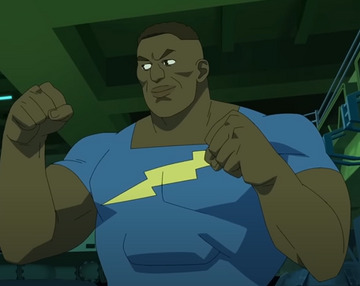
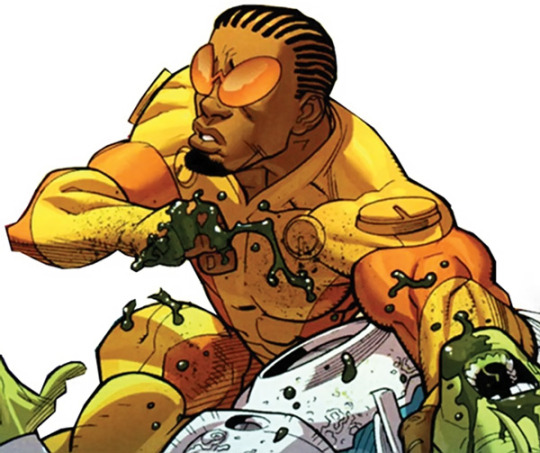

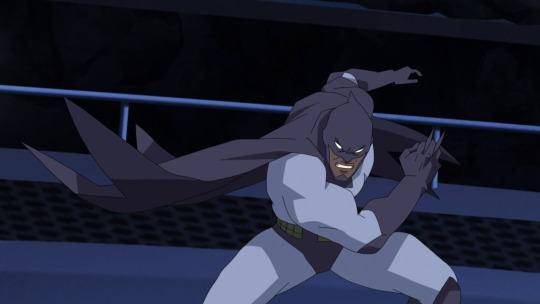
In what ways do costumes and concealing identities further separate the superheroes from normal society? How necessary is it for the superheroes to hide their true identities to successfully achieve their goals?
The show takes some time to explore the process of how superheroes pick their costumes and how they choose to have their identities displayed, such as hiding one of their identities or making attempts to separate them.
A somewhat common trend among some superheroes of the world, usually superheroes who have had experience in the careers or are generally older, is that they don’t wear a mask or any sort of garment that could skewer their identity, which makes a lot of sense for superheroes who don’t have separate identities in their day-to-day lives, but for characters like Omni-man/Nolan Gray and Atom Eve/Samantha Eve Wilkins, one of Mark’s friends and allies, they’re still able to hide and separate their identities without using a mask of some sort. This isn’t quite successful for Eve as Mark is able to recognize her at school after encountering her as her superhero counterpart earlier, and she offers an explanation that most people don’t expect someone they know to be a superhero, a very Hannah Montana situation that mostly works. Mark, however, has a number of reasons as to why he has to wear a mask, especially for the safety of his friends and family, as there are numerous cases in the comics where villains exploit his identity as well as his ties to his Father.
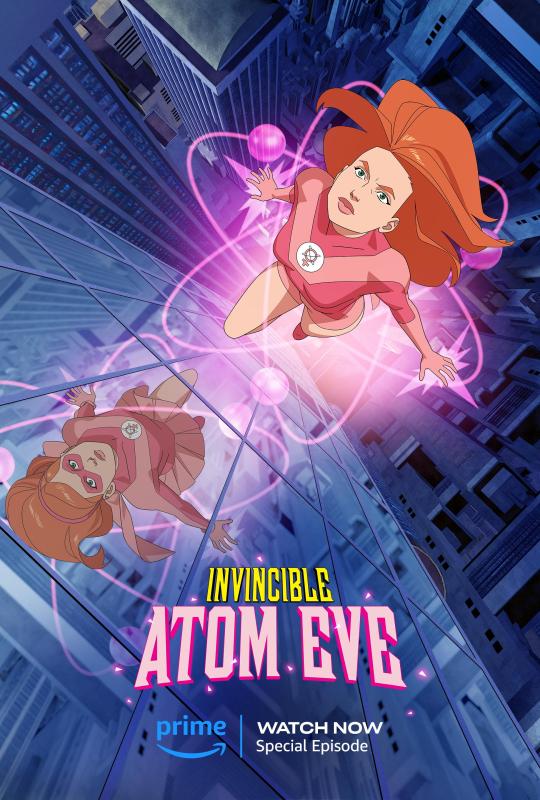
The costume designs also play a part in separating the superheroes from society and are explicitly described as symbols. When he starts, Mark builds his costume with the notable goggles and bandana to hide his identity. He later visits Art Rosenbaum, a suit tailor who designs many of the costumes of the show, and we see him create Invincible’s suit and mask that he dawns for most of his career that helps hide his identity as Mark Grayson (an important detail that will be explored quite soon in the series). When picking a suit design with Art, Mark states that he doesn’t like the orange and yellow suit designs and wants something “more iconic” (hence the yellow ‘I’ in the middle of his suit). This reflects both Mark’s understanding of the superhero identity that is modeled greatly after his father who dawns an ‘iconic’ white and red suit with the letter ‘O’ on it, a symbol, as Omni-man describes it, and the design of other superheroes entities of the time that dawned sleek black lines and colors that accompanied whatever other color scheme the superhero wore.
youtube
How do the economic, political, and social events that occurred during the series’ creation and broadcast cultivate and inform the superheroes’ decisions and actions?
The Invincible comics began its run in 2003, meaning some of the comic elements and stories may have been influenced by the period of time in which there was a heavy focus on the United States combatting terrorism following the events of 9/11, as many “alien threats” dealt with by the superheroes resemble this period. Sam Raimi’s Spider-Man (2002) also came out a year prior and is heralded as a large influence in comic book superheroes, most likely also being an influence in the creation of Invincible as they share very many similar elements (and even have various comic runs where both characters crossover to work alongside each other and are drawn by the same artist).
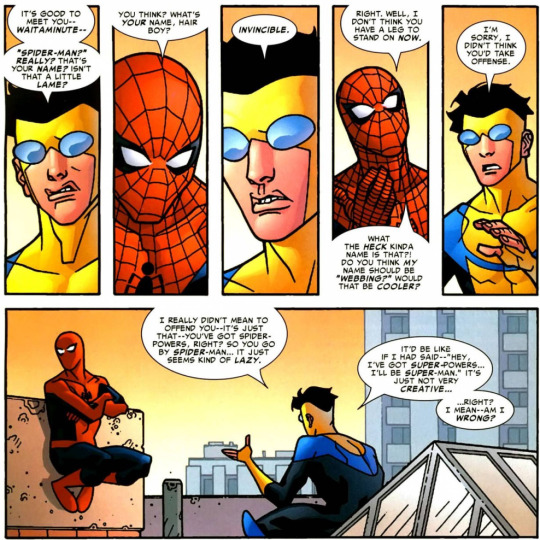
Nonetheless, the T.V. show that’s been broadcasting since 2021 very much attempts to modernize the story, and we see elements of more transparent Government involvement (or rather more exposure into the credibility of the Government) following major events such as Trump’s impeachment. Additionally, in recent years there has been general dialogue and questioning over the State following more and more largely broadcasted and empowering social justice movements and mass protests in recent years (e.g. the Black Lives Matter movement) that have worked to counter a lot of authoritative policies as well as deconstruct prevailing social constructs. In the show, this can be reflected by how Invincible (and several superhero characters) begins to make more of his own decisions instead of simply following orders given to him by Cecil, as well as a general distrust for Government authorities by the general public due to either their reliance on Superheroes and their continuous exploitation of people, both superheroes and non-superheroes.
How do the superheroes question themselves, each other, and their obligations and duties to the people around them?
Mark especially questions his role and obligation as Invincible as his plate grows larger, takes on more responsibilities and constantly has his beliefs toyed with. Growing up with a father as a superhero, being a superhero just like him had been Mark’s dream for 17 years. However, after having his whole world shattered when his father revealed himself to be a world conqueror playing “superhero” and “family man” as a means to accomplish his goal of conquering Earth, killing the most powerful superheroes and thousands of civilians due to Mark refusing to join in the conquest, Mark begins the continuous journey of questioning his role and responsibility as a superhero, often fearing he would turn out like his father and constantly blames himself for the destruction Omni-man/Nolan caused. Even in the second episode, we see Invincible learn the nuances and difficulties of superhero work when he causes the death of an Old lady while trying to evacuate her from an alien invasion.
youtube
youtube
A common theme in the show is the irony of Mark’s superhero name, Invincible, and how he is often going up against threats that are a lot more powerful than him and he repeatedly gets beat up and loses his battles. This takes a toll on Mark, causing him to question his abilities more often than not, as well as those close to him e.g. his mother. It also plays into the theme of growing up and independence and all the challenges that come along with it.
youtube
Atom Eve also goes through her own journey of establishing her obligation and duties as a superhero, as she comes to the realization that her abilities (the power to see and manipulate matter at subatomic levels) could be used for more humanitarian purposes like solving world hunger and building homes rather than being reduced to violence in the form of crime fighting. She leaves her superhero team in order to pursue this goal, which she learns comes with its own challenges that cause her to question whether or not she’s doing the right thing.
youtube
Our season 1 antagonist, Omni-man, has his own journey of questioning himself and his obligation as a superhero. Initially, his militaristic, planet-conquest mindset that is instilled in Viltrumite culture is conflicted when he comes to Earth and learns about humanity and societies on Earth, developing an obligation to protect the planet, even if he planned to conquer it in the future. Even after revealing his goal was to “breed” a suitor, a.k.a Mark, that could help him on his conquest, he is unable to follow through because he’s overcome with emotion and memories of his time on Earth while nearly killing his son. In the 4th episode of the 2nd season, Omni-man shares a vulnerable moment with Mark/Invincible where he talks about how he doesn’t understand why he cares for and feels obligated to protect a “weak” alien species, why he feels like this should be his purpose instead of the Viltrumite conquest, and why death and the guilt of his actions suddenly begins to weigh on him for the first time in his life. The episode ends with Omni-man fighting his ex-comrades to protect an alien planet alongside his son, completely showing an overhaul in his initial ideologies, and is prepared to die for the Thraxan alien species.

@theuncannyprofessoro
19 notes
·
View notes
Text
I really agree with your analysis of both the plot of the show and your reading of the article. Watching only two episodes of the show and having relatively little context, it was difficult to draw a ton of connections between some of the points of the reading and the show. I had not thought of your point of "unexplained suicides" in relation to the deaths in the show and those that occur in real life.
Viewing Response 12
In his article “Images of International Politics in Chinese Fiction: Liu Cixin’s Three-Body Problem,” Stephen Benedict Dyson writes on how politics is not always presented directly to the public. He explains how “works of popular culture, such as science fiction novels, are ‘second-order representations,’ designed to ‘re-present elements of social and political life through a layer of fictional representation’” (461).
In the show Three-Body (2023), Dyson’s point is evident through the abnormal uptick in suicides by scientists. It is clear through the link with each person’s final message of “physics doesn’t exist anymore” that there is a cause for these deaths unrelated to the typical causes of suicide. In the real world, there have been cases where scientists have suddenly disappeared when on the verge of a breakthrough or after having made one. In most of these cases, the discovery would help a large group of people but also hurt a business or corporation. The focus on scientists and their mysterious deaths in Three-Body seems to be loosely tied with real events in the way Dyson describes in his article.

#oxyspeculativetv @theuncannyprofessoro
7 notes
·
View notes
Text
I really love the inclusion of "shade being thrown" in international relations. In my analysis, I struggled to find concrete examples of international relations being played out in the show beyond the judgment of globalization. It is definitely a pivotal part of both the show and likely the book and I really enjoy your analysis of it.
Three-Body: Viewing Response 12

In Stephen Benedict Dyson's “Images of International Politics in Chinese Science Fiction: Liu Cixin’s Three-Body Problem,” he emphasizes the reflection of international relationships in science fiction media. Benedict discusses what he calles the “second image,” in which the competitive nature of nationalism is what leads the Chinese government to push forward with the development of the transmission device. They do this out of fear of getting left behind technologically from the world superpowers. In episode one of Three Body Problem (2023), a meeting is held with representatives from both numerous countries to try and figure out what is causing scientists all over the world to commit suicide. The scene is lit very coldly, creating a hostile atmosphere for which this meeting is held. Furthermore, the relatable and witty policeman, Shi Qiang, comments on the foreigners in the room, “All these guys want is to get information out of us, but they never tell us anything.” The shade thrown towards the representatives of the western countries isn’t something that we would typically see in a series made in the west, and it captures the inability for countries to work together because they are blinded by a false sense of superiority.
@theuncannyprofessoro
5 notes
·
View notes
Text
The Boys: Diabolical Roundtable
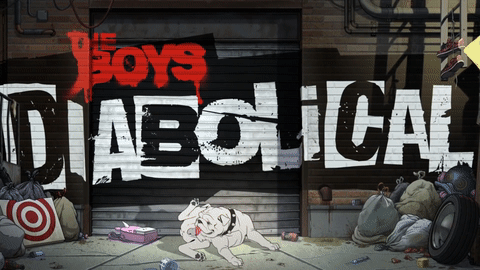
How do structural mythology, cultural studies, and cultural history reflect the series’ world and world-building around superheroes?
As an intellectual property as a whole, The Boys constructs an at times scarily possible structural mythology around superheroes. Although to the public of the world they live in Vought presents the typical mythology of a powerful superhero that does anything and everything for the common good of the common person, structuring the mythology of The Seven into what we think of as a typical comic book superhero, as a viewer we are privy to what truly goes on beyond the news cameras and headline stories. The world and heroes that The Boys constructs are reflected through the cultural studies and cultural history of America through this gilded dynamic of what is presented in the media covering up what truly happened. The Boys: Diabolical hones in on this dynamic through a series of vignettes exploring what absolute power and media control can do—especially to the common person—engendering the cultural values and fears of our current time while simultaneously adding a new portrayal of literal and figurative power to our cultural understanding of it.
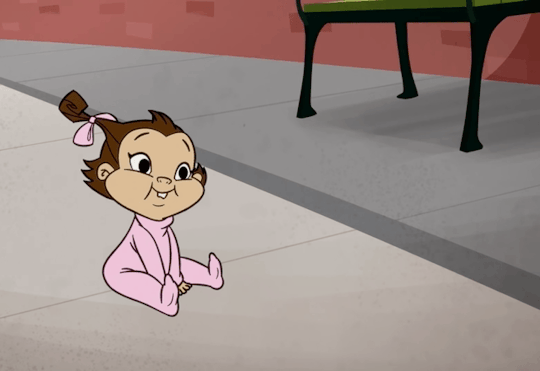
In what ways are the superheroes and their abilities informed by their racial, gender, sexual, and cultural identities? Unlike many characters’ powers and roles in The Boys, the superpowers in Diabolical are mostly random. For the most part throughout the show, this is due to how superpowers are largely used to comedic effect, whether that be a silly power or comedic (but still gratuitous) violence. However, of the characters that appear from The Boys in Diabolical, there are two clear standouts; Homelander and Black Noir. Both were created by Vought, the ultimate conservative post-capitalist conglomerate, to play very specific roles heavily informed by their racial and gender identities. Homelander, a blonde-haired, blue-eyed white man who was essentially made in a lab to be Vought’s all-American poster boy serves as the pinnacle of a conservative pro-social message, while Black Noir, a black man who has been effectively silenced by Vought is used for his skills and abilities but is unable to speak or be his own hero.
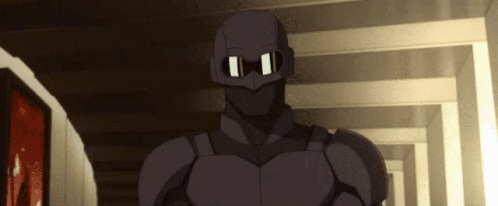
In what ways do costumes and concealing identities further separate the superheroes from normal society? How necessary is it for the superheroes to hide their true identities to successfully achieve their goals?
Unlike many superheroes of the past, Diabolical exaggerates The Boys' distinct lack of superhero anonymity. Aside from the various stories centering around individuals' experiences with “Compound V,” almost all of the superheroes that appear in the show are not hidden behind masks but rather deliberately seeking attention from the public both to raise their “ratings” with Vought and to complete personal missions. Diabolical presents an alternative to the idea that a superhero must be a masked figure with no subjective “I” and demonstrates the grim reality of unchecked power and obsession with the “I”. Throughout the series, Diabolical asks; who needs to hide their identity when nothing can injure them in any way? Superheroes and powerful companies like Vought do anything they please in The Boys world and Diabolical dives into the personal consequences of that reality.
How do the economic, political, and social events that occurred during the series’ creation and broadcast cultivate and inform the superheroes’ decisions and actions?
Although this series of vignettes serves well as a comedic and at times lighthearted spin-off version of The Boys, there are particular episodes that explore the cultural history of the time that The Boys was originally adapted into a television series that make it such a powerful reflection of our own world. One particular episode, titled “One Plus One Equals Two,” plays strongly into the fears and anxieties of the concept of “fake news,” a concept that The Boys plays heavily on. However, Diabolical focuses less on media manipulation and more so on the personal effects that it can have on everyday people that are affected by Compound V. In one such episode, titled “Boyd 3D,” two everyday people become addicted to a temporary form of Compound V and their lives skyrocket to fame, only to fall apart just as quickly. The episode explores themes of social media selectivity and the reality behind the moments that we choose to share online with an emphasis on the corrupting effects of such power.
How do the superheroes question themselves, each other, and their obligations and duties to the people around them?
The superheroes in The Boys and Diabolical alike both question themselves, each other, and most of all their obligations constantly. Diabolical, however, has the freedom of unrelated episodes to explore more unique and inventive versions of superheroes and situations. In an episode titled “An Animated Short Where Pissed-Off Supes Kill Their Parents,” we meet dozens of superheroes who have powers that aren’t quite up to the crime-fighting task. However, because they were given those disappointing superpowers by their parents injecting them with Compound V, they were left as children at this school and abandoned by their parents. In the super world of Diabolical, superheroes are not superhumans with unquestionable morality but rather normal people who were thrust into a position of immense power in a world where morality and humanism are no longer a solid truth to stand on.
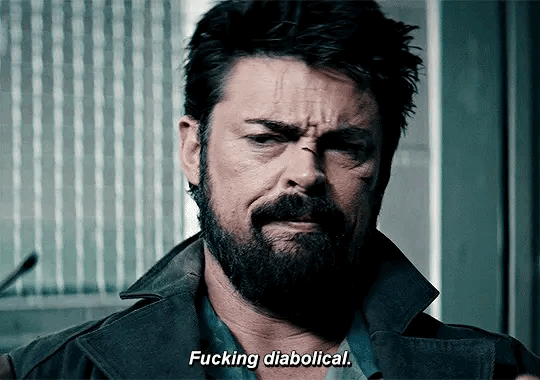
@theuncannyprofessoro #oxyspeculativetv
11 notes
·
View notes